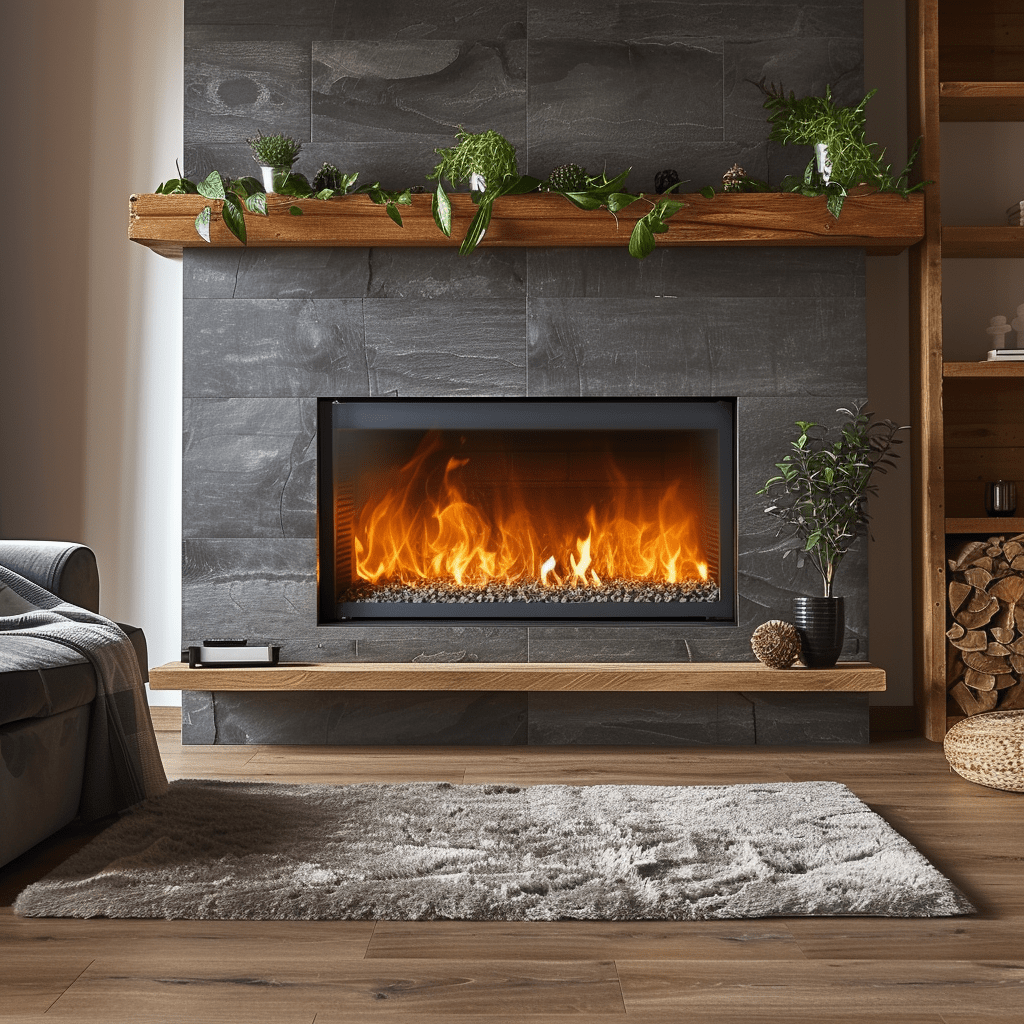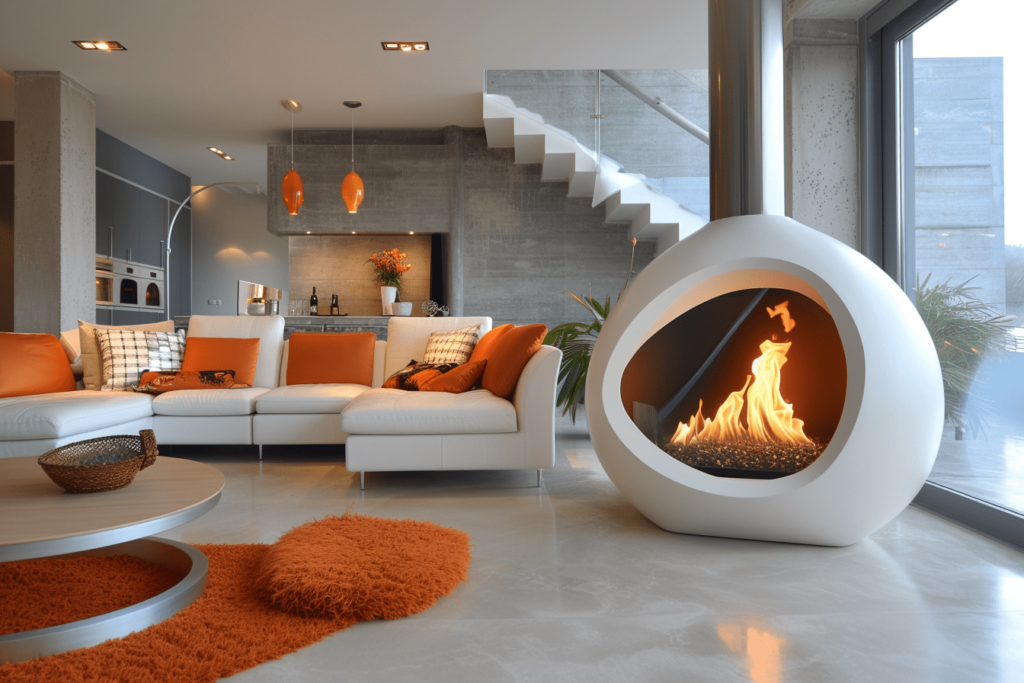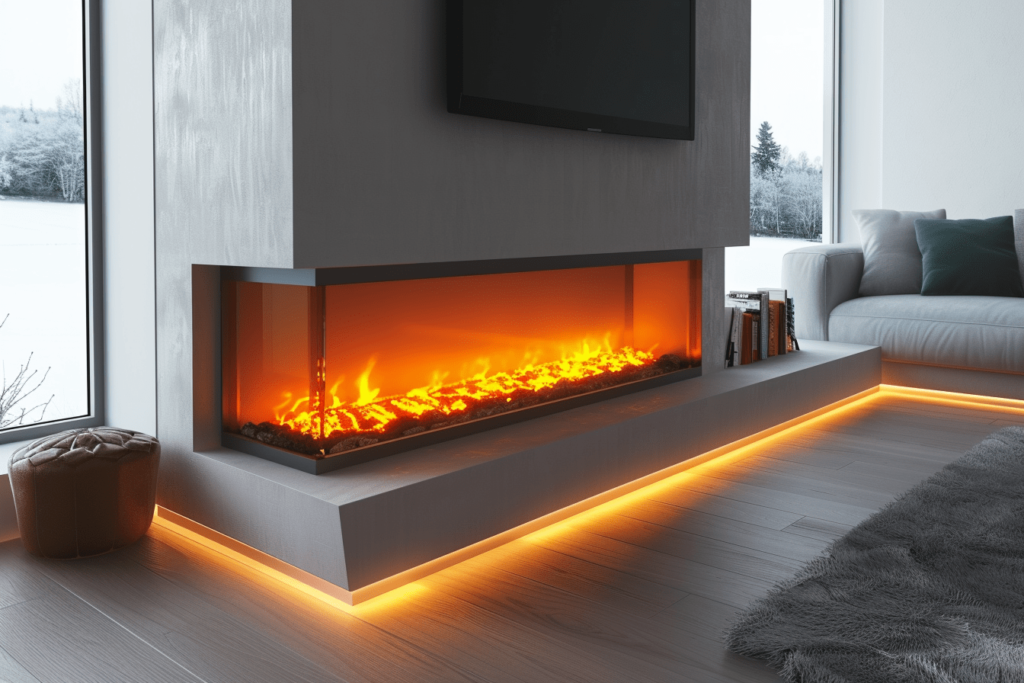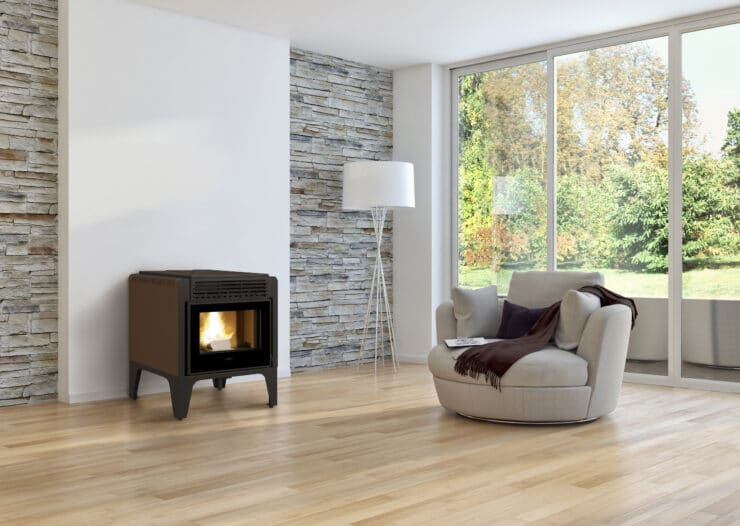In the quest for more sustainable and environmentally friendly heating options, eco-friendly fireplaces have gained popularity. They not only offer a clean source of heat but also add an aesthetic touch to any home. In this guide, we’ll explore what eco-friendly fireplaces are, the different types available, their advantages over traditional fireplaces, and how to maintain them.
What are Eco-Friendly fireplaces?
Eco-friendly fireplaces are heating devices that minimize environmental impact by using renewable fuels or electricity. Unlike traditional fireplaces that burn wood or coal, these fireplaces release fewer pollutants into the air, making them a greener and healthier option.

Environmental and health benefits
- Lower CO2 emissions: by using cleaner fuels, carbon dioxide emissions are significantly reduced.
- Indoor air quality: By not producing smoke, better air quality is maintained within the home, especially benefiting people with respiratory issues.
Types of eco-friendly fireplaces
Bioethanol fireplaces
These fireplaces use bioethanol, a liquid fuel produced from biomass. They are easy to install, require no chimney or flue, and bioethanol burns without leaving ashes or residues.

Electric fireplaces
They operate on electricity, producing heat without combustion. They are one of the safest and easiest to maintain options, ideal for apartments or homes without access to a flue.

Pellet fireplaces
Use small cylinders of compressed wood or biomass. They are energy-efficient and emit a very limited amount of emissions. They require a more complex installation and storage for the pellets.

Advantages of Eco-friendly fireplaces over traditional ones
- Energy efficiency: They convert a higher amount of energy into heat, reducing heating costs.
- Reduced environmental Impact: By using renewable fuels or electricity, the environmental impact is significantly lower.
- Ease of installation and maintenance: Many models do not require complex installations or a flue.
Maintenance of Eco-Friendly Fireplaces
Maintenance varies depending on the type of eco-friendly fireplace, but it is generally less demanding than that of traditional fireplaces. Bioethanol and electric fireplaces require periodic surface cleaning and occasional review of their electrical components. Pellet fireplaces need deeper cleaning to remove combustion residues from pellets and ensure the ventilation system is free from obstructions.
Frequently asked questions about installing an eco-friendly fireplace
- How much do eco-friendly fireplaces cost?
- Eco-friendly fireplaces can have the following price ranges in euros:
- Electric fireplaces: From €170 to €1700 or more, depending on size and features.
- Bioethanol fireplaces: Can vary between €420 and €2500 or more, depending on design and heating capacity.
- Pellet fireplaces: These tend to be the most expensive, with prices ranging from €850 to €4200 or more, due to their technical complexity and heating capacity.
- Eco-friendly fireplaces can have the following price ranges in euros:
- Are They difficult to install?
- The difficulty of installation varies depending on the type of eco-friendly fireplace:
- Electric and bioethanol fireplaces: Generally, are the easiest to install and may require only wall mounting or insertion into an existing opening.
- Pellet fireplaces: May require a more complex installation, needing connection to an external ventilation outlet and possibly installing air ducts for combustion.
- The difficulty of installation varies depending on the type of eco-friendly fireplace:
- What maintenance do they require?
- The maintenance of eco-friendly fireplaces involves tasks such as regular cleaning and review of electrical components (if applicable), with the following approximate costs:
- Regular cleaning: Has no additional cost beyond the time and cleaning products required.
- Review of electrical components: While generally not having an additional cost if you do it yourself, if you prefer a professional to do it, it can have a cost that varies according to the hourly rate of local technicians.
- The maintenance of eco-friendly fireplaces involves tasks such as regular cleaning and review of electrical components (if applicable), with the following approximate costs:
Eco-friendly fireplaces represent an excellent alternative to traditional ones, offering energy efficiency, reduced environmental impact, and ease of use and maintenance. By choosing an eco-friendly fireplace, you are not only opting for a sustainable heat source but also contributing to the protection of the environment. Consider your specific heating needs and the type of fireplace that best suits your home to make the best decision.



